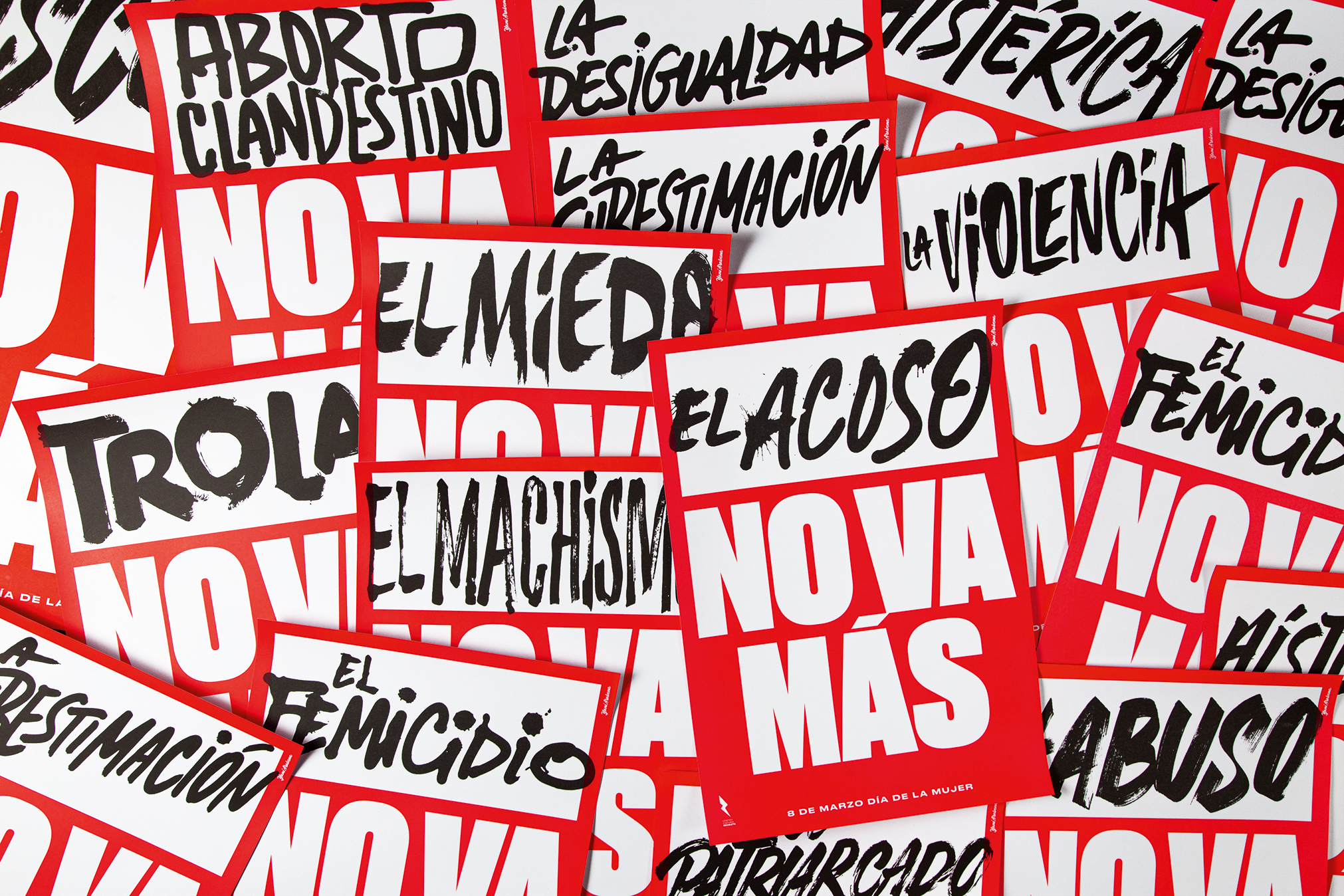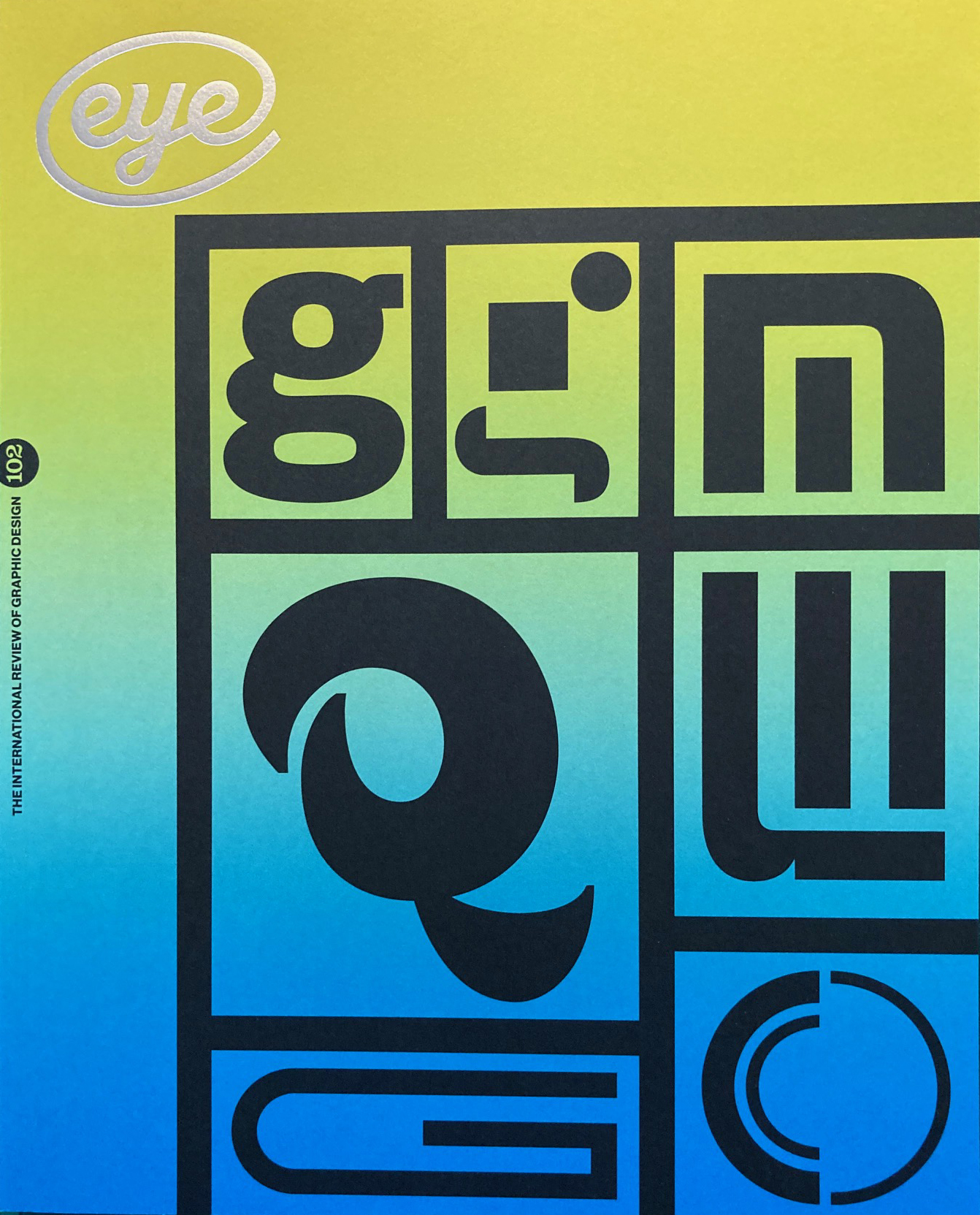Autumn 2021
Typographics 21: Session 1
1 June 2021. César Puertas, host.
Yani Arabena, YaniGuille&Co
‘Letters with voice’Juan Casco
‘Typography as a tool for the protection of indigenous languages and cultures’Said Dokins
‘Illegible writing / Escrituras ilegibles’
This opening session, curated and introduced by Colombian designer César Puertas, followed more than just a geographical theme and had activism and resistance at the core of the three talks, albeit explored in very different ways. With the exception of Juan Casco’s talk, the session was delivered in Spanish with subtitles (although these are no longer present in the free-to-access YouTube videos), a wise decision by the organisers, which afforded contributors the fluency to engage in a rich delivery of complex ideas.
Yani Arabena (Argentina) presented her journey into calligraphy, lettering and type, which pushed the exploration of letter-shapes into a land of emotions, expressivity and soul. The focus was her lettering project for the campaign ‘No va más’ (‘No more’) as a part of a cultural programme for Women’s Month at the Centro Cultural Recoleta in Buenos Aires. Using the expressive possibilities of lettering, Arabena set out to amplify the voices of real women in telling stories to help combat femicide (feminicidio), patriarchy and other forms of gender violence.
The session moved on with Juan Casco (Ecuador) and his proposal for Silabario Amazónico, a writing system for indigenous languages and part of an effort to decolonise approaches to indigenous cultures. Casco took care to avoid the trap of over-simplifying the situation in explaining the project’s ambitions to explore the possibilities for representing Amazonian voices in ways that the Latin script cannot, for creating a better balance between indigenous languages and the dominance of Latin. Aesthetically pleasant, above all else the outcome is a powerful tool.
At the same time this was a personal project, not a community-driven effort, which raises many questions. Would it even be adopted by the communities for which it is intended? From a typographic perspective, is it legible at all sizes? Does it work in different environments? Could this one day become a tool to help save the indigenous languages it seeks to better represent?
Said Dokins (Mexico). Aurora, 2017. Photo: Leonardo Luna. Top. Yani Arabena’s partly handwritten posters for the 2019 campaign ‘No va más’ (‘No more’), which expresses women’s voices: ‘no more inequality’, ‘no more clandestine abortions’, ‘no abuse’, etc.

Said Dokins (Mexico) is an unclassifiable urban artist – not a formal calligrapher, not a typographer, not even a graffiti artist – who oscillates comfortably between all these fields. His talk could be enjoyed on two levels: for the purely visual pleasure of encountering his lettering, calligraphy and massive urban interventions, and as a discourse, where Dokins reflects – sometimes in an excess of circumlocution – on the meaning of graffiti, the action of writing and the result of that action.
First published in Eye no. 102 vol. 26, 2021
Elena Veguillas, designer and researcher, London
Eye is the world’s most beautiful and collectable graphic design journal, published for professional designers, students and anyone interested in critical, informed writing about graphic design and visual culture. It is available from all good design bookshops and online at the Eye shop, where you can buy subscriptions and single issues.

